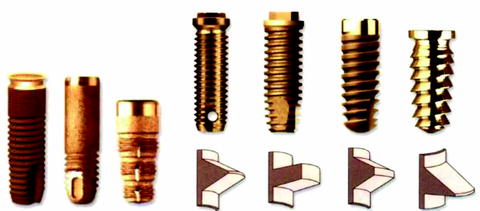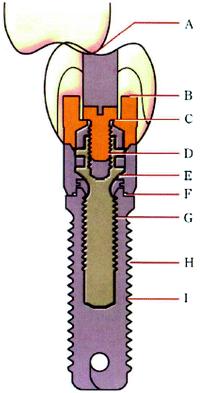, Hai-Yang Yu2, Jing Zheng1, Lin-Mao Qian1 and Yu Yan3
(1)
Tribology Research Institute, Southwest Jiaotong University, Chengdu, People’s Republic of China
(2)
West China College of Stomatology, Sichuan University, Chengdu, People’s Republic of China
(3)
Institute of Advanced Materials and Technology, University of Science and Technology, Beijing, People’s Republic of China
Abstract
Missing teeth is a common problem worldwide, the incidence of which is on the rise year after year. For example, in China, there are more than 800 million missing teeth in people who are over 65 years old [1]. Not only does the loss of teeth affect one’s aesthetic appearance, but it may also lead to other complications, such as dysphonia and temporomandibular joint disorder.
Missing teeth is a common problem worldwide, the incidence of which is on the rise year after year. For example, in China, there are more than 800 million missing teeth in people who are over 65 years old [1]. Not only does the loss of teeth affect one’s aesthetic appearance, but it may also lead to other complications, such as dysphonia and temporomandibular joint disorder.
A dental implant is an artificial tooth root that is used in dentistry to support restorations and then replace missing teeth. The global dental implant and prosthetics market was valued at $6,781.7 million in 2011 and is expected to reach $10,562.2 million by 2016. Europe is leading the global dental implant market, with the largest share of 41.0 %, at an estimated $1,675.1 million in 2011 [2].
7.1 Dental Implant System
The written records on dental implants date back to a.d. 1000. In the 1960s and 1970s, progress and breakthroughs in dental implant were based on the concept of osseointegration first described by the two research groups of Brånemark and Schroeder et al. [3–6]. They all described this biological phenomenon as osseointegration, which refers to the direct contact histologically between living bone and the surfaces of commercially pure titanium implants and is believed to provide the rigid fixation of a dental implant within the alveolar bone and promote the long-term success of dental implants [7, 8]. So in the past four decades, implant therapy with the replacement of missing teeth by implant-supported prostheses has expanded to become a widely accepted treatment modality for the rehabilitation of fully and partially edentulous patients.
At present, the most common dental implant is a cylinder implant. According to the shape of the implant, a cylinder dental implant system can be divided into two kinds: straight cylinder and tapered implant (Fig. 7.1). According to the screw shape, different screw designs can be obtained, as shown in Fig. 7.2.



Fig. 7.1
Tapered implant

Fig. 7.2
Different screw designs of dental implants
The function of dental implants can be accomplished by a successful interface. As shown in Fig. 7.3, the interface of a dental implant system includes (a) the occlusal surface, (b) a crown–abutment interface, (c) a crown–fixing screw interface, (d) a fixing screw–central screw interface, (e) a central screw–abutment interface, (f) an abutment–implant interface, (g) a central screw–implant interface, (h) an implant–layer interface, (i) and an implant–bone interface.


Fig. 7.3
The interfaces of a dental implant system
In fact, due to masticatory motion, friction and wear with different amplitudes (from microns to millimeters) and modes (fretting and sliding wear) may occur at the above interfaces. Chapter 3 presents the sliding wear behavior of occlusal surfaces. In addition, the fretting behavior of the interfaces [from (b) to (h) of Fig. 7.3] of the implant system similar to that of engineering materials has been widely investigated in the literature. Therefore, our research simulated the fretting wear of the bioactive implant–bone interface, and we present the results here.
7.2 Fretting Wear of the Dental Implant–Bone Interface
Dental implants for replacing one or more missing teeth caused by old age or accidents as well as for aesthetic purposes are becoming common due to the better success rate of implantations [9]. However, despite the low failure rate [10], because dental implants have become an especially important therapeutic modality in the last decade, the number of failures is large. After the clinical success of osseointegration, there was undoubtedly a certain degree of micromotions in the bone–dental implant interface during normal functions in vivo [11], which is often regarded as fretting from the viewpoint of tribology. Fretting is a small-amplitude oscillatory movement that occurs between contacting surfaces, which are usually nominally at rest [12]. It may result in two kinds of damage for nonliving tissue: wear, with the associated production of debris, leading to a loss of fit between contacting surfaces; and rapid crack nucleation and propagation [13
Stay updated, free dental videos. Join our Telegram channel

VIDEdental - Online dental courses


